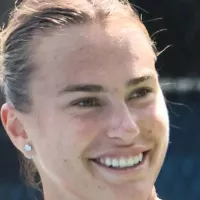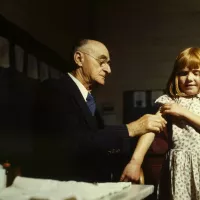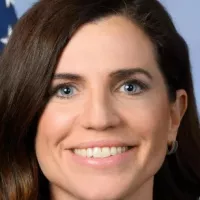1967: Toronto Maple Leafs Baseball Team
From 1896 to 1967, Toronto was home to the Toronto Maple Leafs baseball team of the International League.
1972: Early Wynn Elected to Baseball Hall of Fame
In 1972, Early Wynn was inducted into the Baseball Hall of Fame.
January 1976: San Francisco Giants Nearly Relocate to Toronto
In January 1976, the San Francisco Giants nearly relocated to Toronto after owner Horace Stoneham agreed to sell the team to a Canadian consortium. However, a court ruling halted the move, and the Giants remained in San Francisco.
1976: Blue Jays Team Name Selection
In 1976, the Toronto Blue Jays name was selected out of over 4,000 suggestions, with 154 people choosing the name "Blue Jays". The name was influenced by Toronto's traditional use of blue in sports teams and the Labatt Brewing Company's popular beer, Labatt Blue, who originally owned the team.
April 7, 1977: Blue Jays Debut with Win Against Chicago White Sox
On April 7, 1977, the Toronto Blue Jays debuted with a win against the Chicago White Sox, marking the beginning of their journey as a franchise.
1977: Bobby Doerr as Hitting Coach
From 1977 to 1981, Bobby Doerr, a second baseman with the Boston Red Sox, served as a hitting coach with the Blue Jays.
1977: Early Wynn as Radio Broadcaster
From 1977 to 1981, Early Wynn was a radio broadcaster for the Blue Jays with Tom Cheek.
1979: BJ Birdy Debuts as Mascot
In 1979, BJ Birdy, played by Kevin Shanahan, began serving as the Blue Jays' sole mascot.
1981: Bobby Doerr as Hitting Coach
From 1977 to 1981, Bobby Doerr, a second baseman with the Boston Red Sox, served as a hitting coach with the Blue Jays.
1981: Early Wynn as Radio Broadcaster
From 1977 to 1981, Early Wynn was a radio broadcaster for the Blue Jays with Tom Cheek.
1982: Jerry Howarth becomes Cheek's partner
Since 1982, Jerry Howarth had been Tom Cheek's broadcasting partner.
1983: "OK Blue Jays" Song Released
In 1983, the pop song "OK Blue Jays" by Keith Hampshire and The Bat Boys was released and became a tradition for Blue Jays fans to sing and clap along to during the seventh-inning stretch of home games.
1984: Exhibition Games in Vancouver
Prior to the 1984 season, the Toronto Blue Jays played a three-game exhibition series against the Milwaukee Brewers at BC Place in Vancouver.
1985: Exhibition Games in Vancouver
Prior to the 1985 season, the Toronto Blue Jays played a three-game exhibition series against the Milwaukee Brewers at BC Place in Vancouver.
1986: Bobby Doerr Elected to Baseball Hall of Fame
In 1986, Bobby Doerr, who served as a hitting coach with the Blue Jays early in their history, was elected to the Baseball Hall of Fame.
August 4, 1989: Stieb Loses Perfect Game Bid
On August 4, 1989, Dave Stieb came close to pitching a perfect game but gave up a double to Yankees' batter Roberto Kelly with two outs in the ninth inning, who then scored on the next batter.
1989: Blue Jays Adopt Buttoned Uniforms
In 1989, upon moving to SkyDome (now Rogers Centre), the Toronto Blue Jays adopted buttoned uniforms. The team logo was relocated to the left chest on the home uniforms, and the road uniforms changed to grey with blue/white/blue split letters. Player names were added to the road uniform and all-blue caps were worn with the road uniform.
September 2, 1990: Dave Stieb Throws a No-Hitter
On September 2, 1990, Dave Stieb pitched the only no-hitter in Blue Jays franchise history. This achievement came after he had lost three previous no-hit bids with two outs in the ninth inning.
1992: First World Series Championship
In 1992, the Toronto Blue Jays won their first World Series championship, becoming the first team outside the U.S. to do so.
1993: Exhibition Game in Vancouver
In 1993, the Toronto Blue Jays played an exhibition game against the Detroit Tigers and Brewers in Vancouver.
1993: Back-to-Back World Series Championships
In 1993, the Toronto Blue Jays won their second consecutive World Series championship, cementing their place in MLB history.
1996: Level of Excellence Instituted
In 1996, the Blue Jays instituted a "Level of Excellence" on the 500 level of the Rogers Centre to honour "tremendous individual achievement."
1996: Red Uniforms Worn on Canada Day
Since 1996, the Toronto Blue Jays wore predominantly red or red-accented uniforms every July 1, Canada Day. The uniforms were based on the team's alternate uniforms they wore at the time but with red as the primary colour.
1997: Roger Clemens Wins Pitching Triple Crown
In 1997, Roger Clemens won the pitching Triple Crown.
1998: Roger Clemens Wins Pitching Triple Crown
In 1998, Roger Clemens won the pitching Triple Crown.
1998: Tigers Moved to AL Central
In 1998, the Detroit Tigers moved to the AL Central, causing the rivalry with the Toronto Blue Jays to die down.
2000: Ace and Diamond Debut as Mascots
In 2000, Ace and Diamond were introduced as the Blue Jays' mascots, replacing BJ Birdy.
2001: Uniforms Modified
Before the 2001 season, the Toronto Blue Jays made slight modifications to the uniforms, eliminating the tricolour stripes and adding a single colour piping along the chest and neck. The road uniforms gained blue sleeves in a faux-vest design, and the alternate white uniform featured the new "T-bird" logo.
2003: Diamond Removed as Mascot
After the 2003 season, Diamond was removed as a mascot, leaving Ace as the team's sole mascot.
2003: "OK Blue Jays" Song Remixed
In 2003, the song "OK Blue Jays" was remixed, and a shortened version has been played at home games since then.
June 3, 2004: Tom Cheek ends consecutive game streak
On June 3, 2004, Tom Cheek, the Toronto Blue Jays' radio play-by-play announcer, ended his streak of calling every Blue Jays game since the team's inaugural contest, after 4,306 consecutive regular-season games and 41 postseason games, when he took two games off following the death of his father.
2004: New Visual Identity Adopted
Before the 2004 season, the Toronto Blue Jays adopted a new visual identity with a black, silver, and graphite motif. The home and black alternates read "Jays" in a diagonal arrangement. Letters and numerals were in graphite with light blue and silver trim. The road uniforms featured the city name in a similar letter style.
2004: Rogers Buys SkyDome and Renames it Rogers Centre
In 2004, Rogers Communications purchased SkyDome and renamed it Rogers Centre.
2005: Montreal Expos Become Washington Nationals
In 2005, the Montreal Expos became the Washington Nationals, leaving the Toronto Blue Jays as the only MLB team based outside the U.S.
2005: AL Record
In 2005, the New York Yankees broke the Blue Jays' 1993 attendance record of 4,057,947, which had stood as an AL record for 12 years.
2005: "The Star-Spangled Banner" Sung Before "O Canada"
Since 2005, "The Star-Spangled Banner" has been sung before "O Canada" at every Blue Jays home game, as all of their opponents are based in the United States.
2006: Tom Cheek Commemorated
During the 2006 season, the Toronto Blue Jays commemorated their former radio play-by-play announcer, Tom Cheek, by wearing a circular patch on the left sleeve of their home and road game jerseys. The patch was adorned with the letters 'TC', Cheek's initials, as well as a stylized microphone.
2006: Red Trim Added to Black Alternates
In the case of the 2006 uniforms, the Toronto Blue Jays added red trim to their black alternates and sometimes added the flag of Canada or a red maple leaf on the uniform for Canada Day.
2007: CBC Carries Blue Jays Games
CBC carried Blue Jays games intermittently throughout the team's history, most recently in 2007 and 2008. Jim Hughson was the play-by-play announcer, with Rance Mulliniks and Jesse Barfield providing colour commentary.
2008: CBC Carries Blue Jays Games
CBC carried Blue Jays games intermittently throughout the team's history, most recently in 2007 and 2008. Jim Hughson was the play-by-play announcer, with Rance Mulliniks and Jesse Barfield providing colour commentary. The Blue Jays have not appeared over-the-air in Canada in English since 2008.
2008: Rogers Granted License for "Baseball TV" Channel
In 2008, Rogers Communications, owner of the Jays, was granted a license by the Canadian Radio-Television Commission (CRTC) for a specialty channel called "Baseball TV". The channel, which was never launched, would have featured content from the U.S.-based MLB Network along with original Canadian content.
2008: Tom Cheek nominated for Ford C. Frick Award
In 2008, Tom Cheek received the third most votes from fans to be nominated for the Ford C. Frick Award for broadcasting excellence.
August 2010: Sportsnet One broadcasts Blue Jays games
In August 2010, Sportsnet One began broadcasting Blue Jays games, often in case of scheduling conflicts with the main Sportsnet channels. However, Rogers faced criticism because Sportsnet One was initially only available on Rogers Cable systems.
July 31, 2011: Roberto Alomar's Number Retired
On July 31, 2011, Roberto Alomar became the first person to be inducted in the Hall of Fame as a Blue Jay and was the first person to have his number, #12, retired by the Blue Jays.
2011: Gregg Zaun as Colour Analyst
From 2011 to 2017, Gregg Zaun was one of the colour analysts for Blue Jays games on Sportsnet, rotating with others in the role. Also in 2011, TVA Sports has aired games in French.
2011: Gregg Zaun begins serving as occasional colour commentator
From the 2011 season, Gregg Zaun has served as the occasional colour commentator for Blue Jays.
2011: Bautista Sets All-Star Votes Record
In 2011, Jose Bautista set a major league record with 7,454,753 All-Star votes.
2011: Roberto Alomar Elected to Hall of Fame
In 2011, second baseman Roberto Alomar was elected to the Baseball Hall of Fame. He is the first player to be inducted based primarily on his service as a player for the Blue Jays.
2011: TVA Sports Airs Games in French
Since 2011, TVA Sports has aired Blue Jays games in French, with Denis Casavant and François Paquet providing play-by-play commentary and Rodger Brulotte as the colour commentator.
2011: Reduced games between Blue Jays and Tigers
Since 2011, the Toronto Blue Jays and Detroit Tigers have only played each other six to seven times per year.
September 2012: AMI-tv Simulcasts Blue Jays Games with Described Video
In September 2012, AMI-tv simulcasted three Blue Jays games with described video provided by CJCL correspondent Sam Cosentino. These broadcasts included explanations of on-screen graphics to accommodate blind and low-vision viewers.
2012: Tribute to Canadian Armed Forces Begins
Since 2012, the Blue Jays have paid tribute to a member of the Canadian Armed Forces at every Sunday home game by presenting them with a personalized jersey during the third inning.
June 27, 2013: First Canadian MLB Broadcast in Mandarin
On June 27, 2013, Rogers' Omni Television station CJMT-DT simulcasted a Blue Jays game, with commentary in Mandarin. This marked the first ever Canadian MLB broadcast in that language.
2013: Level of Excellence Redesign
During the 2013 All-Star Break, the Level of Excellence was redesigned for the addition of Carlos Delgado's name. The redesign removed all uniform numbers from the Level of Excellence aside from Roberto Alomar's retired #12, Roy Halladay's retired #32 and Tom Cheek's 4306 consecutive called games streak.
2013: Dirk Hayhurst filled in for Morris
During the 2013 season, former Blue Jays pitcher Dirk Hayhurst filled in for Jack Morris for some games.
2013: Jack Morris Serves as Colour Commentator
In 2013, Jack Morris served as the colour commentator for Toronto Blue Jays radio broadcasts.
2013: Tom Cheek Posthumously Receives Frick Award
In 2013, Tom Cheek posthumously received the Ford C. Frick Award for broadcasting excellence after nine years on the ballot.
2014: Exhibition Game in Montreal
In 2014, the Toronto Blue Jays hosted an exhibition game against the New York Mets at Olympic Stadium in Montreal prior to the start of the season.
2015: U.S. Broadcasts for Postseason Games
In 2015, due to Rogers' MLB broadcast contracts, Sportsnet carried the U.S. broadcast (Fox) for Blue Jays postseason games as it is technically considered a regional broadcaster.
2015: High Viewership for ALDS Game 4
In 2015, the Sportsnet broadcasts of the American League Division Series (ALDS) games involving the Blue Jays achieved high ratings. Game 4 drew an audience of 4.38 million viewers.
2015: Exhibition Game in Montreal
In 2015, the Toronto Blue Jays hosted an exhibition game against the Cincinnati Reds at Olympic Stadium in Montreal prior to the start of the season.
2015: Donaldson Sets All-Star Votes Record
In his first season with the Blue Jays in 2015, Josh Donaldson set a new major league record by receiving 14,090,188 All-Star votes.
2016: U.S. Broadcasts for Postseason Games
In 2016, due to Rogers' MLB broadcast contracts, Sportsnet carried the U.S. broadcast (TBS) for Blue Jays postseason games as it is technically considered a regional broadcaster.
2016: Exhibition Game in Montreal
In 2016, the Toronto Blue Jays hosted an exhibition game against the Boston Red Sox at Olympic Stadium in Montreal prior to the start of the season.
2016: Dan Shulman Sporadic Game Calls
Since 2016, Dan Shulman has been calling Blue Jays games sporadically, with Buck Martinez and Pat Tabler handling the primary play-by-play and colour commentary duties, respectively.
November 7, 2017: Roy Halladay's Death
Roy Halladay, the former Blue Jays pitcher, died in an airplane crash on November 7, 2017.
2017: Gregg Zaun terminated as colour commentator
At the end of the 2017 season, Gregg Zaun was terminated as the occasional colour commentator amid accusations of improper conduct from several female employees.
2017: Ben Wagner Hired as Primary Radio Announcer
Following Jerry Howarth's retirement in the 2017 season, Ben Wagner was hired as the primary radio play-by-play announcer, splitting duties with Dan Shulman and Mike Wilner.
2017: Gregg Zaun as Colour Analyst
From 2011 to 2017, Gregg Zaun was one of the colour analysts for Blue Jays games on Sportsnet, rotating with others in the role.
2017: Jr. Jay Saturday Promotions End
In 2017, the Blue Jays usually had Jr. Jay Saturday promotions with Ace accompanied by his younger brother, Junior, until the end of the season.
2017: Exhibition Game in Montreal
In 2017, the Toronto Blue Jays hosted an exhibition game against the Pittsburgh Pirates at Olympic Stadium in Montreal prior to the start of the season.
March 29, 2018: Roy Halladay's Number Retired
On March 29, 2018, the Blue Jays retired #32 in honour of Roy Halladay, who had passed away in an airplane crash on November 7, 2017. This was the second number to be retired by the Blue Jays.
June 2018: Omni to Air Games in Tagalog
In June 2018, Omni announced that it would air Sunday afternoon games in Tagalog, the most spoken language of the Philippines, through the remainder of the season.
2018: Exhibition Game in Montreal
In 2018, the Toronto Blue Jays hosted an exhibition game against the St. Louis Cardinals at Olympic Stadium in Montreal prior to the start of the season.
2018: Jr. Jay Promotions Moved to Select Sundays
Since the 2018 season, the Blue Jays Jr. Jay promotions, featuring Ace and his younger brother, Junior, were moved to select Sundays.
2019: One of Two Undefeated MLB Franchises Through Multiple World Series Appearances
As of 2019, the Toronto Blue Jays were one of only two MLB franchises that are undefeated through multiple World Series appearances, along with the Miami Marlins.
2019: Regular Season of Sunday Broadcasts in Tagalog
For the 2019 season, Sportsnet and Omni announced a regular season of Sunday broadcasts in Tagalog.
2019: Exhibition Game in Montreal
In 2019, the Toronto Blue Jays hosted an exhibition game against the Milwaukee Brewers at Olympic Stadium in Montreal prior to the start of the season.
2020: Blue Jays Play Home Games in Buffalo
Due to border restrictions brought about by the COVID-19 pandemic, the Blue Jays played home games at Sahlen Field in Buffalo, New York, for the 2020 season.
2020: Exhibition Series Cancelled in Montreal
In 2020, a series against the New York Yankees scheduled to be played in Montreal was cancelled due to the COVID-19 pandemic.
2020: Canada Day Game Cancelled
In 2020, the Toronto Blue Jays Canada Day game was cancelled due to the COVID-19 pandemic.
February 2021: Radio Broadcasts to Simulcast Television Broadcasts
In February 2021, it was announced that all radio broadcasts for the 2021 season would be a simulcast of the television broadcast due to the pandemic. Ben Wagner would assume an alternative role.
April 30, 2021: Alomar Removed from Level of Excellence
On April 30, 2021, the Blue Jays announced that they would remove Roberto Alomar from the Level of Excellence and take down his banner at Rogers Centre after he was banned from baseball for sexual harassment.
2021: Canada Day Game Held in Buffalo
In 2021, due to Canada-U.S. travel restrictions, the Toronto Blue Jays Canada Day game was held in Buffalo, New York.
2022: Sportsnet Carries Own Production of Postseason Games
In 2022, MLB allowed Sportsnet to carry its own production of Blue Jays postseason games as it is technically a national broadcaster.
2022: Canada Day Game
In 2022, the Toronto Blue Jays hosted an afternoon home game during Canada Day, with a giant Canadian flag presented during the pre-game ceremony, and "O Canada" was sung in English and French by Royal Canadian Air Force Band vocalist and Warrant Officer David Grenon.
2022: Jacques Doucet Retires from TVA Sports
Jacques Doucet, former Montreal Expos radio announcer, broadcast the Blue Jays on TVA Sports from 2011 until his retirement in 2022.
2023: Broadcasting Team Changes on Sportsnet
As of 2023, Dan Shulman serves as the lead play-by-play announcer for Blue Jays games on Sportsnet, with Buck Martinez as the primary colour commentator. For select series, Matt Devlin replaces Shulman, and Joe Siddall replaces Martinez. Also in 2023, TVA Sports signed a three-year deal to air 81 Blue Jay games per season in French.
2023: TVA Sports Signs Three-Year Deal
In 2023, TVA Sports signed a three-year deal to air 81 Blue Jays games per season.
2024: Blue Jays Trade Players Before Deadline
During the 2024 regular season and before the trade deadline, the Toronto Blue Jays traded away Yimi García, Nate Pearson, Danny Jansen, Justin Turner, Yusei Kikuchi, Trevor Richards, Isiah Kiner-Falefa, and Kevin Kiermaier.
2024: City Connect "Night Mode" Uniform Unveiled
In 2024, the Toronto Blue Jays unveiled a City Connect uniform inspired by Toronto's nightlife. The jersey, nicknamed "Night Mode", is a "pitch blue" uniform that features an illustration of the Toronto skyline in royal blue, centred by the "Toronto" wordmark in red. The traditional Blue Jays logo patch and cap are recoloured to match the uniform, and feature a red maple leaf at the centre of a stylized red and blue "T" in split letters.
Mentioned in this timeline
The United States of America is a federal republic located...

San Francisco is a major commercial financial and cultural hub...

Seattle is the most populous city in Washington state and...

Josh Donaldson is a former American professional baseball third baseman...
Florida a state in the Southeastern United States is largely...
The Philippines is an archipelagic nation in Southeast Asia situated...
Trending

2 months ago Aryna Sabalenka aims for first WTA Finals title amid strong competition in Riyadh.
10 months ago Mississippi Hit by Deadly Tornadoes and Earthquake; Six Deaths Reported Statewide

6 months ago Vaccine Coverage Uncertainty, Childhood Vaccination Plunge, and Measles Decline in Kentucky

1 month ago Nancy Mace's Advisor Resigns, Citing Disloyalty to Trump; Campaign Suffers Blow

9 months ago Brandon Williams' Injury Fuels Mavericks' Playoff Fears; Comes off Bench in Game
5 months ago Mexico Transfers 26 Cartel Members to US in Accord with Trump Administration.
Popular

Stranger Things created by the Duffer Brothers is a popular...

XXXTentacion born Jahseh Dwayne Ricardo Onfroy was a controversial yet...

Kelsey Grammer is an accomplished American actor producer and singer...

Marco Rubio is an American politician attorney and diplomat He...

Candace Owens is an American conservative political commentator and author...

Bernie Sanders is a prominent American politician currently serving as...